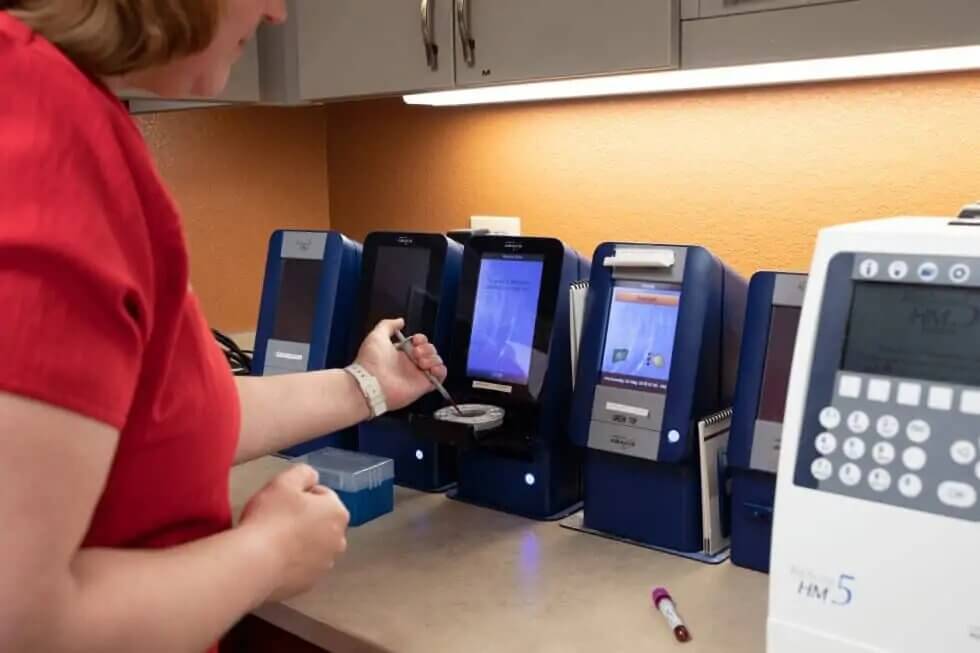Anesthesia and Your Pet
Many pet owners worry unnecessarily about anesthesia in their pets. Although anesthesia can never be completely free of risk, today’s modern anesthetics make that risk very small.
The same anesthetics that allow complicated surgeries such as heart and kidney transplants to be done on humans are used in pets as well. Even very frail animals can usually be anesthetized safely. In general, the risks from NOT performing a needed procedure, such as dental cleaning or tumor removal, are much higher than the risk from the anesthesia.
Pre-Operative Blood Screening Required

We use pre-operative blood tests and radiographs (X-rays) to help us determine whether a procedure will be safe for your pet before it is performed. We require pre-operative blood screening for all pets before anesthesia is administered. Even young and apparently healthy animals can have serious organ dysfunctions that are not evident without such testing.
For young patients, the blood work can be done on the day of the procedure. For patients, over seven years a more extensive blood panel is performed. We like this done at least a few days prior to better tailor the anesthetic protocol that will be used. Chest X-rays are taken if there is any suspicion of heart or lung disease, or cancer.
Monitoring Your Pets Anesthesia During Surgery
During anesthesia, your pet will be monitored closely for blood oxygen levels, heart rate, and heartbeat intensity, throughout the surgery. The anesthesia is always administered by certified and licensed veterinary technicians or doctors to ensure safety and proper dosing. IV fluids may also be given if kidney or liver function is compromised, to ensure your pet’s full recovery.
With proper care and monitoring, your pet should go home after anesthesia just as perky and healthy as when he arrived at the hospital, whether he or she is 16 months or 16 years of age.
If you have further concerns about anesthesia in your pet, we would be happy to discuss the risks and benefits of any procedure with you and explain the exact protocol that will be used. Please let us know!


